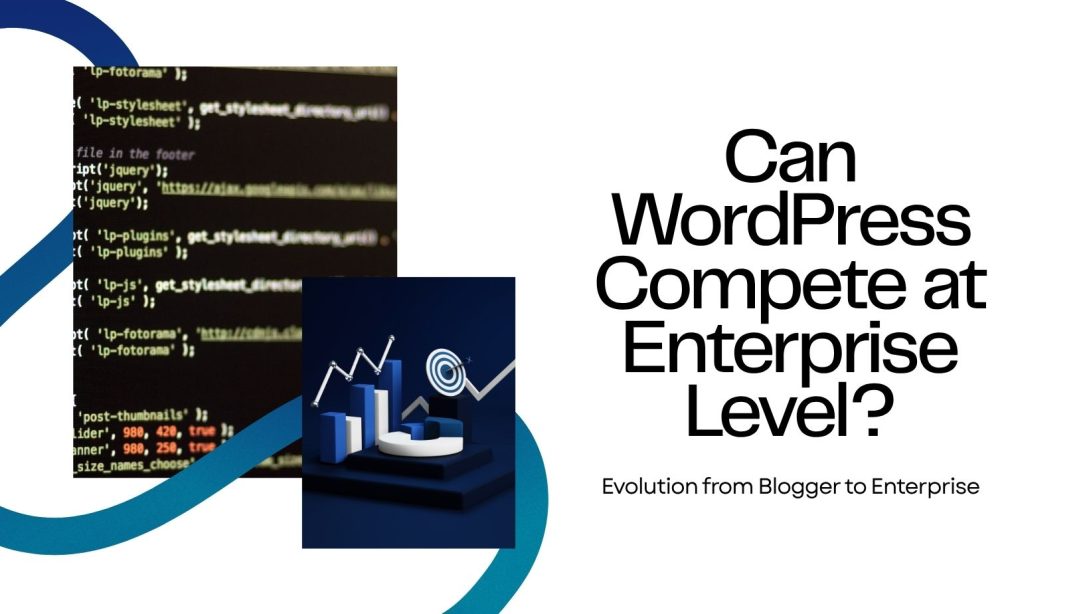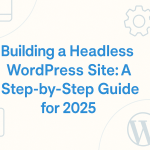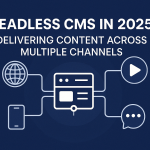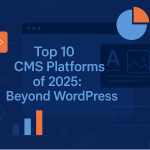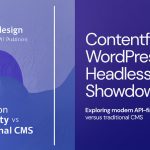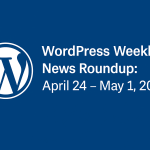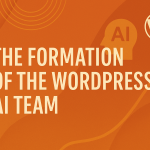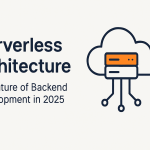WordPress is often viewed as the go-to platform for bloggers, small businesses, and digital marketers. Yet in 2025, a new question has taken center stage: Can WordPress position itself as a true enterprise-level CMS?
Despite its origins as a blogging tool, WordPress has evolved into a powerful content management system that powers over 43% of all websites worldwide (W3Techs, 2025). With a vast plugin ecosystem, strong developer community, and increasing support for headless and API-driven use cases, WordPress is actively pushing the boundaries of what a monolithic CMS can achieve.
But does it really match the needs of global enterprises facing demands for scalability, security, omnichannel delivery, and personalization?
This article explores WordPress’s potential as an enterprise-ready solution—its strengths, weaknesses, and how it’s being used in large-scale digital operations today.
WordPress’s Architectural Core: Monolithic, Yet Extensible
At its foundation, WordPress is a monolithic CMS built on PHP and MySQL. Everything—from the admin UI and front-end rendering to content management—lives within the same codebase. While this design is simple and user-friendly, it traditionally lacks the decoupled flexibility of headless or API-native platforms.
However, WordPress has embraced extensibility through:
- REST API (built-in)
- WPGraphQL (for modern front-end frameworks)
- Custom post types and taxonomies
- Multisite capabilities
“The WordPress REST API opened the door for decoupled front ends. We now deliver React-powered content using familiar editorial workflows.” — Web Engineer, Education Media Network
Verdict: WordPress remains monolithic at heart but can act headless with the right architecture.
Strength: User-Friendliness at Scale
One of WordPress’s most compelling enterprise strengths is its ease of use. Editors and marketers can manage content with little technical training. The Gutenberg block editor provides a drag-and-drop interface that is intuitive and customizable.
Third-party tools like:
- Elementor
- Advanced Custom Fields (ACF)
- Kadence
- Divi
enhance layout flexibility without needing custom code.
“We migrated our global newsroom to WordPress. The team was publishing confidently within a week of training.” — Director of Digital Operations, Global Nonprofit
Strength: Massive Plugin Ecosystem
WordPress’s 60,000+ plugins offer enterprise-grade functionality across:
- SEO (Yoast, RankMath)
- Performance (WP Rocket, Perfmatters)
- Security (Wordfence, Sucuri)
- CRM & Marketing (HubSpot, Mailchimp, Salesforce)
- eCommerce (WooCommerce)
This extensibility allows enterprises to build rich digital experiences rapidly.
Challenge: Plugin overload can become a liability. Poorly coded or redundant plugins increase attack surfaces, performance bottlenecks, and maintenance complexity.
Weakness: Omnichannel Delivery Gaps
Out of the box, WordPress is optimized for web content delivery. Multichannel or omnichannel orchestration—like pushing content to mobile apps, kiosks, IoT devices, and personalized touchpoints—is not native.
Developers must build headless stacks using:
- WP REST API
- WPGraphQL
- JAMstack frameworks (e.g., Next.js, Gatsby)
- Middleware orchestration
“We built a decoupled stack to deliver WordPress content to both web and mobile. It worked—but required custom syncing layers.” — Senior Developer, Global Retail Brand
Verdict: WordPress can go omnichannel, but it’s DIY.
Weakness: Scaling Pain Points
Scaling WordPress for millions of users or hundreds of content editors presents challenges:
- Plugin bloat from overuse
- Performance tuning with object caching, CDNs, and headless rendering
- Role-based permission complexity in multisite environments
Enterprise workarounds include:
- VIP by Automattic (managed WordPress for enterprise)
- WP Engine Atlas (headless WordPress platform)
- Custom REST caching layers and CI/CD pipelines
“We love WordPress but had to invest heavily in DevOps to scale securely.” — DevOps Lead, Financial Publisher
Strength: Cost-Effectiveness
WordPress is open-source and free. Organizations only pay for:
- Hosting (e.g., Kinsta, WP Engine, Cloudways)
- Premium plugins/themes
- Custom development
Compared to proprietary CMS platforms like Sitecore or AEM, the cost of ownership is significantly lower.
“We reduced our annual CMS costs by 80% after switching from a licensed DXP to WordPress.” — CIO, Mid-Market Software Vendor
Is WordPress Truly Enterprise-Ready?
WordPress has proven itself in enterprise use cases:
- News & Media: CNN, TechCrunch, TIME
- Government: White House (whitehouse.gov), Sweden’s official sites
- Retail & eCommerce: Bata, Renault, The Walt Disney Company
- Education: Harvard Gazette, MIT Libraries
With the right stack, managed services, and governance, WordPress can:
- Power headless sites
- Integrate with enterprise CDPs and CRMs
- Deliver multilingual, multisite content
- Comply with accessibility and SEO best practices
When WordPress Makes Sense for Enterprise
- Rapid content deployment across marketing campaigns
- Editorial-driven teams prioritizing speed and usability
- Cost-sensitive digital transformation projects
- MVP builds for global brands with fast iteration needs
- Headless architecture requiring flexible CMS backend
When It Might Not
- Complex omnichannel personalization across touchpoints
- Regulated industries needing deep audit trails and compliance
- Enterprises seeking all-in-one DXP stacks with native campaign and commerce tools
Conclusion: Evolving from Simplicity to Scalability
While WordPress began as a simple blogging tool, in 2025, it is now a viable contender for enterprise digital content management. Its strengths in usability, cost, and extensibility make it an attractive platform for many use cases.
However, enterprises must approach WordPress with architectural planning, plugin discipline, and performance governance to achieve scalability and omnichannel readiness.
“WordPress won’t replace Adobe AEM or Sitecore for every use case. But for 80% of content-driven projects, it’s fast, powerful, and enterprise-worthy when implemented strategically.” — CMS Consultant, NYC
References
- W3Techs 2025 CMS Usage Statistics
- Automattic WordPress VIP
- WPGraphQL Documentation
- WP Engine Atlas Headless Platform
- Yoast SEO Plugin
- Gutenberg Block Editor
Final Word: WordPress may not be a monolithic enterprise DXP by design—but when treated like a modern, composable backend with the right team and tools, it has everything it needs to serve global organizations in 2025 and beyond.
